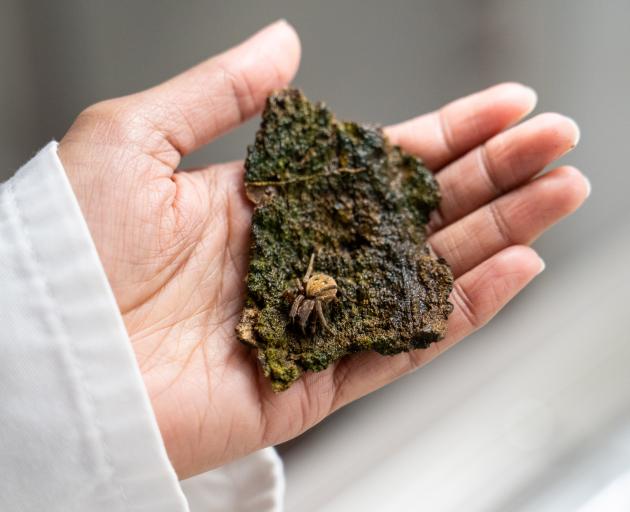Science
Researchers Uncover Mysterious Parasitic Worms Turning Spiders into ‘Zombies’

A fascinating study at Lincoln University is revealing the unsettling relationship between spiders and parasitic worms known as mermithids. PhD student Usha Mendis is dedicated to understanding how these nematodes transform spiders into what can only be described as mindless “zombies,” raising significant concerns about the implications for local ecosystems in New Zealand.
Mermithids infect various invertebrates, including caddisflies, mayflies, and grasshoppers, as well as many of New Zealand’s endemic spider species. Mendis highlights the potential ecological consequences, noting that over 90% of the spider species in New Zealand are endemic. “If something were to happen to them, it would not be good for our biodiversity,” she stated.
The process by which these worms take control of their hosts is both slow and fatal for the spider. As Mendis explains, the infected spiders exhibit physical changes, often developing abnormal features such as enlarged limbs and swollen abdomens. “They look like zombies,” she remarked, emphasizing the dramatic transformation that occurs. Although not all infected spiders show visible signs until after death, those that do can appear distinctly altered.
Understanding the lifecycle of these parasitic worms presents challenges for researchers. While it is known that the nematodes emerge from the spider’s body upon its death, the method by which they initially infiltrate their host remains a mystery. Mendis is focused on uncovering this aspect of their biology. She explains that the nematodes rely on spiders for energy and nutrients as they grow within their hosts.
To facilitate their reproduction, the worms drive the spiders towards moisture, resulting in many spiders being found drowned. This behavior not only poses a threat to the spiders but also disrupts the ecological balance they help maintain. “Spiders hold a special place in the food chain,” Mendis noted, indicating that their demise could have cascading effects on other species.
In her research, Mendis is employing water traps to collect these nematodes, aiming to deepen the understanding of their lifecycle. It has only been 35 years since mermithids were first documented in New Zealand, and Mendis emphasizes that there is still much to learn about their interaction with local spider populations.
Amidst her scientific inquiries, Mendis urges the public to reconsider their perception of spiders. “They may look disruptive and creepy, but they’re not the enemy,” she said. Recognizing the challenges spiders face, particularly from parasitic infections, is essential in appreciating their role in maintaining ecological harmony.
As research continues, the findings may shed light on the broader implications of parasitic relationships in nature, contributing to the understanding of biodiversity and ecosystem health in New Zealand and beyond.
-

 World2 weeks ago
World2 weeks agoPrivate Funeral Held for Dean Field and His Three Children
-

 Top Stories2 weeks ago
Top Stories2 weeks agoFuneral Planned for Field Siblings After Tragic House Fire
-

 Sports3 months ago
Sports3 months agoNetball New Zealand Stands Down Dame Noeline Taurua for Series
-

 Entertainment3 months ago
Entertainment3 months agoTributes Pour In for Lachlan Rofe, Reality Star, Dead at 47
-

 Entertainment2 months ago
Entertainment2 months agoNew ‘Maverick’ Chaser Joins Beat the Chasers Season Finale
-

 Sports3 months ago
Sports3 months agoSilver Ferns Legend Laura Langman Criticizes Team’s Attitude
-

 Sports1 month ago
Sports1 month agoEli Katoa Rushed to Hospital After Sideline Incident During Match
-

 World3 weeks ago
World3 weeks agoInvestigation Underway in Tragic Sanson House Fire Involving Family
-

 Politics2 months ago
Politics2 months agoNetball NZ Calls for Respect Amid Dame Taurua’s Standoff
-

 Top Stories2 weeks ago
Top Stories2 weeks agoShock and Grief Follow Tragic Family Deaths in New Zealand
-

 Entertainment3 months ago
Entertainment3 months agoKhloe Kardashian Embraces Innovative Stem Cell Therapy in Mexico
-

 World4 months ago
World4 months agoPolice Arrest Multiple Individuals During Funeral for Zain Taikato-Fox


















